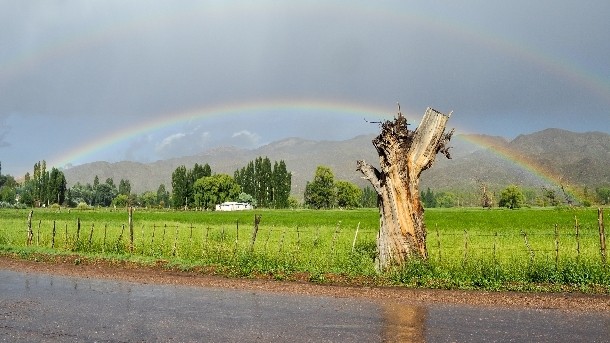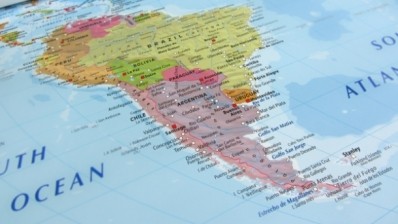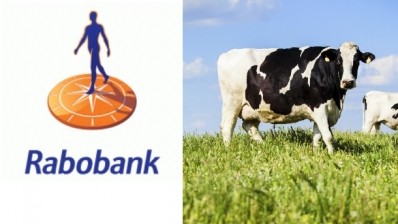Guest article
Water, water, everywhere: Torrential rains dampen Argentina’s milk production prospects early in 2017

The spring and early summer had been drier than normal and a bit of precipitation would help to improve pasture and crop quality. But then the rain kept coming…
By mid-January, many farmers found their fertile agricultural land underwater. The heaviest rains, and the most severe impacts, were felt in the province of Santa Fe, although the surrounding provinces of Córdoba, Entre Rios, and Buenos Aires were also affected. These provinces are the center of Argentina’s dairy production, with Santa Fe and Córdoba alone accounting for roughly two-thirds of the country’s annual volumes.
The amount of rain was exceptional, with the most severely affected areas receiving more than half their expected annual precipitation in just one month.
Rafaela, the heart of Argentina’s dairy country, received nearly 430 millimeters of rain between December 15 and January 15, the most seen for that period in 55 years. The government of Santa Fe estimates that 1,350 of the province’s 3,500 dairy farms have been affected by flooding.
Production impacts
The rains damaged milk production in several ways. With so much moisture, many dairy farms couldn’t drain effectively and cows were left standing in muddy corrals - stressful conditions that knocked back yields.
In addition, with submerged pastures, cattle were faced with limited grass availability and foraging became more challenging. In many cases, farmers were forced to feed additional concentrates to compensate for the lack of pasture. While this undoubtedly improved the herd’s energy balance, it was much less beneficial for farmers’ margins.
Outside the farm gate, muddy, inaccessible roads in some places prevented tankers from even entering dairy farms to pick up milk. Infrastructure is notoriously poor in parts of Argentina and on January 17 dairymen, accompanied by other agricultural producers and stakeholders, staged a protest to demand government investment in public works to prevent this situation from repeating itself in the future.
Quantifying the damage
While it is difficult to quantify exactly how much production has been lost, the consensus seems to be that output has declined by about 1.8m liters per day across the region, with financial losses to dairy farmers totaling tens of millions of dollars.
During a recent press conference, Argentina’s Dairy Undersecretary estimated that production in the affected zones had tumbled by between 18% and 30%.
These estimates have been echoed by processors in the region who claim that their milk receipts are down by up to 20%. It seems likely that there will be at least some short-term upward pressure on milk prices as processors compete with one another to attract milk supplies and keep their lines operating.
The flooding over the past month has brought up many unhappy memories for farmers from April of 2016, when ceaseless rains throughout the month contributed to a year over year decline in milk production of more than 17%.
While the industry today is in a much different place than it was in early 2016, it is easy to see the parallels and empathize with the anxiety that dairy farmers are feeling.
Raindrops on row crops
Of course, dairies have not been the only agricultural operations affected by the rain. The storms hit prime cropland, leaving corn, soybean, sorghum, and sunflower producers all lamenting the excess water. Of the 7m cultivated acres in Santa Fe, it is estimated that 4m of them were impacted by the rains – 1.5m of them to a grave extent.
The impact on the soy crop has been receiving the most attention with the Rosario grains exchange reducing their expectations for the soybean crop by 1.5m tons to 52.4m tons. Many private analysts have been even less forgiving, decreasing their production forecasts by up to 10%.
Total agricultural losses have been estimated at upwards of $1.5bn.
The good news is that farmers have had some relief over the last few days as the rain has subsided. Weather forecasts indicate that it will stay dry for at least another week or so before some new, scattered showers roll in.
Overall, meteorologists expect that Argentina will return to a more normal weather pattern during the coming weeks and months. Argentina’s dairy farmers will hope that comes to fruition.
But between now and then, they have a lot of drying out to do.
Monica Ganley is the principal of Quarterra, a boutique strategy consulting firm dedicated to helping their clients understand and unlock the food and agriculture industries of Latin America. To learn more, visit www.quarterra.com or get in touch at zbavpn.tnayrl@dhnegreen.pbz








